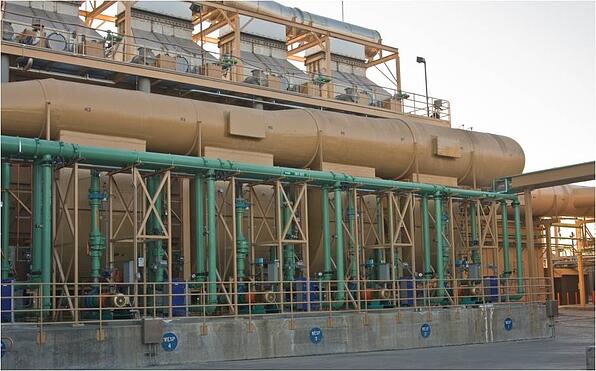Last November I made a blog post describing the use of a wet electrostatic precipitator (WESP) for meeting metals emisssions. This topic will be discussed in greater detail in an Envitech paper being presented at the 2010 A&WMA 103rd annual conference in Calgary, Canada. 
The metals of concern can include mercury, arsenic, lead, cadmium, nickel and others, depending on the process. A control strategy using a wet electrostatic precipitator (WESP) in conjunction with sub-cooling was used on a secondary lead smelter to meet more stringent emission standards. This approach achieved > 98% removal of arsenic and > 92% removal of lead and other condensed metals downstream of a bag-house. This substantially reduced the plant's cancer risk index and helped to meet reduced fence line lead emission limits.
The table below provides a summary of other processes facing similar challenges including the additional removal efficiencies that can be required downstream of existing air pollution controls. Most of the processes are from combustion sources and use a range of air pollution controls including bag-houses, packed bed absorbers, and Venturi scrubbers. In some cases a combination of controls are used. Despite existing controls, very low concentrations of heavy metals can be emitted. In the case of bag-houses for instance, the operating temperature may be in a range that some of the metals are in a gas phase. In such case they will not be collected by particulate control devices. In other cases, the concentrations of submicron, condensed phase heavy metals may exceed the removal capability of controls like packed bed absorbers or Venturi scrubbers.
| Process | Upstream Controls | Compounds Requiring Polishing | Add-On Removal Efficiency* |
| Secondary Lead Smelters |
Bag-houses Packed Bed Absorbers |
Lead (Pb) Arsenic (As) |
92% - 98% |
|
Primary Lead Smelters |
Bag-houses |
Arsenic (As) | > 85% |
| Hazardous Waste Incinerators |
Venturi Scrubbers Packed Bed Absorbers |
Lead (Pd) Cadmium (Cd) Mercury (Hg) |
80% - 90% |
| Refinery Sludge Incinerators |
Venturi Scrubbers Packed Bed Absorbers |
Cadmium (Cd) | 98%-99% |
| Geothermal Plants | Packed Bed Absorbers |
Arsenic (As) Mercury (Hg) |
> 90% |
*Refers to additional removal efficiency after the upstream controls.
The performances achieved on a secondary lead smelter using a WESP, suggest the approach can be used on these other processes to remove residual concentrations of condensed metals. In the case of mercury, the ability to remove it with a WESP depends on whether it is in a condensed form. This requires reliable speciation data to make that determination. More specifically, the mercury must be in a particulate or oxidized form for it to be removed by a WESP.
Please click on the below icon to download a white paper on this topic from the 2010 A&WMA's 103 Annual Converence in Calgary, Canada: "Wet Electrostatic Precipitator (WESP) Control for Meeting Metals Emission Standards".


